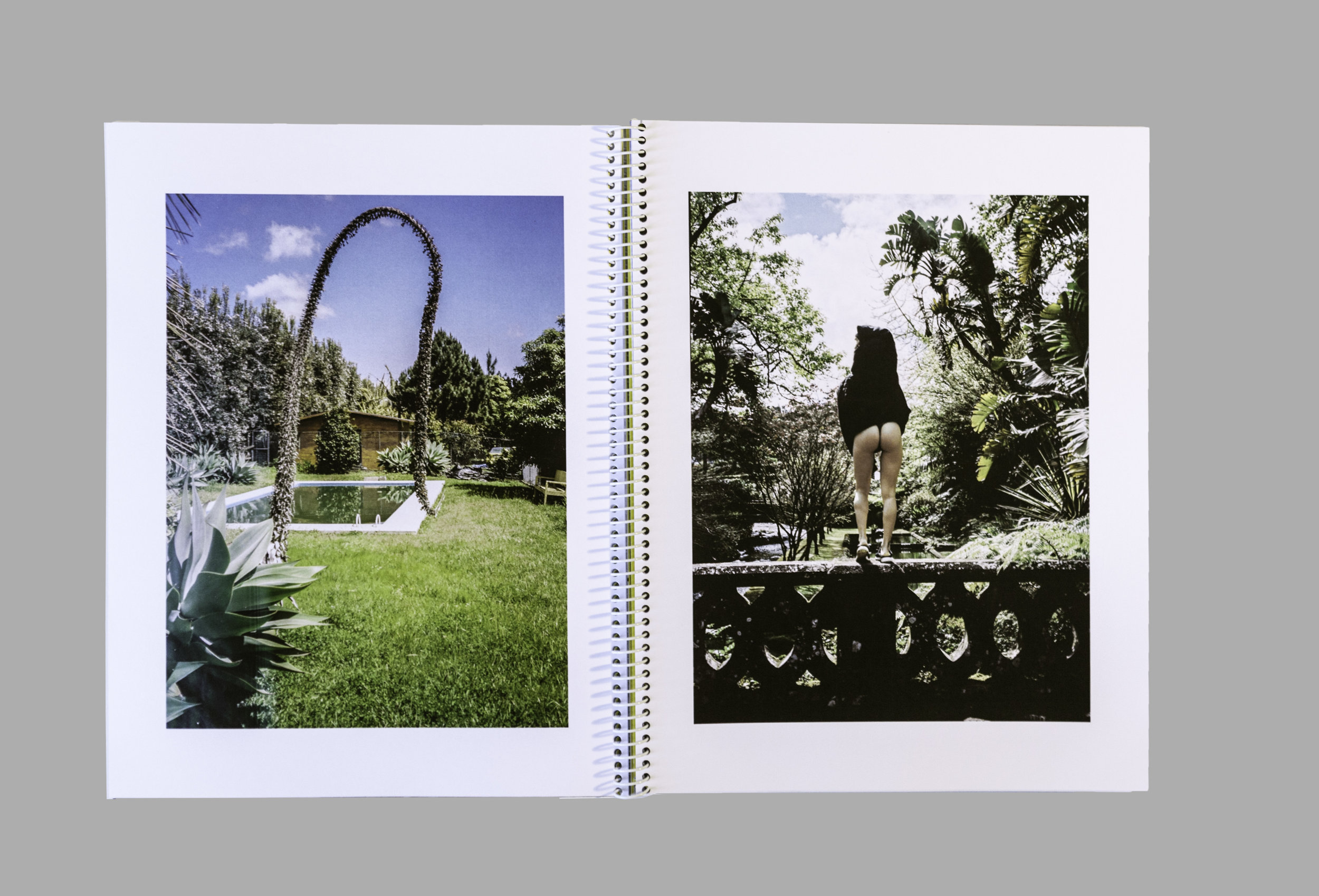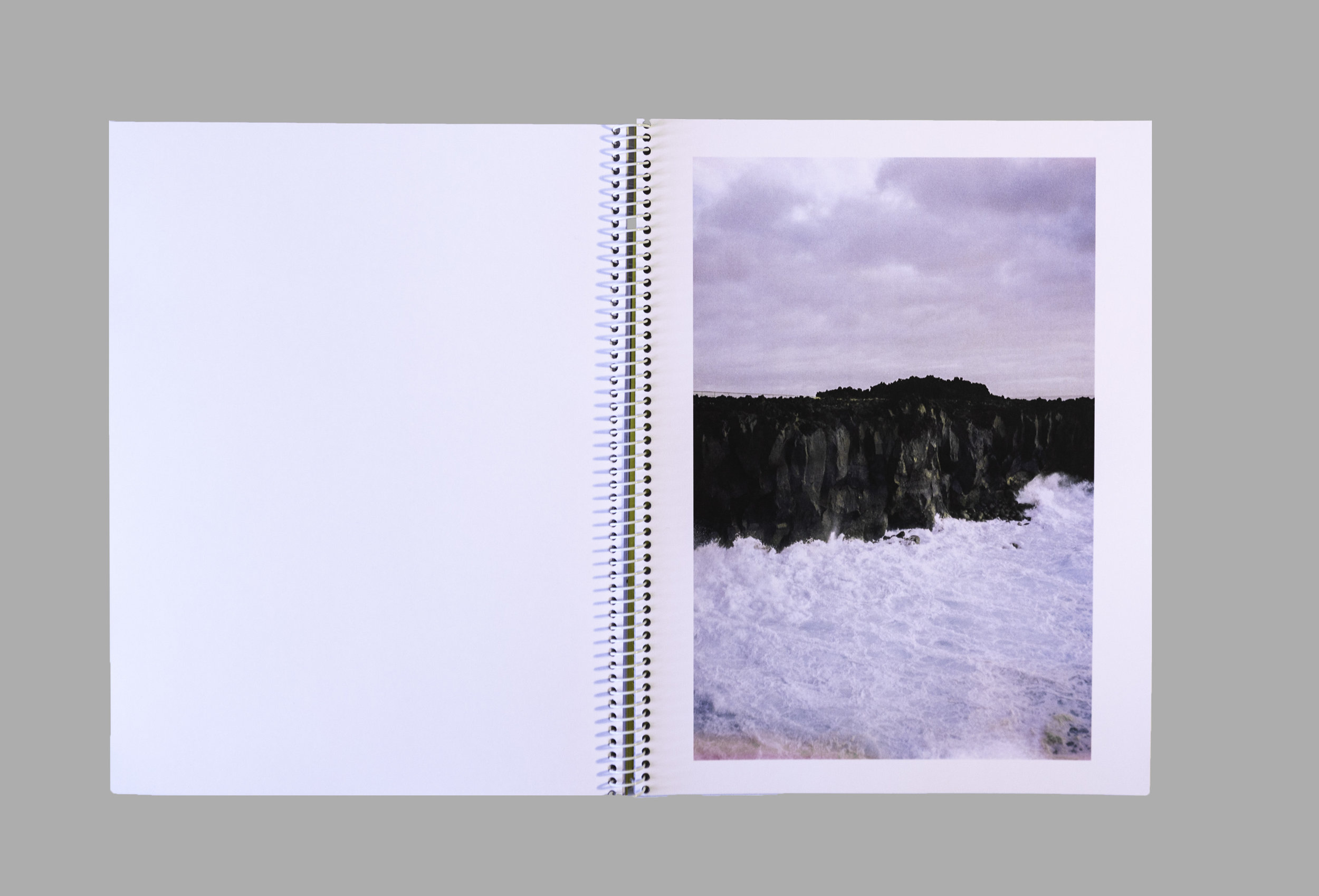Antilía: this is not what it was meant to be; or an ethnography of emotion
In April 2017 photographer Carolina Pimenta travelled to the island of Sao Miguel in the Azores archipelago. Halfway between Europe and North America, Sao Miguel exists in an unusual liminal space - surrounded, pressed and shaped by the force of the Atlantic Ocean. Throughout her time in the island Pimenta created an emotional ethnography of Sao Miguel, using her own internal landscape, local mythology, and the island’s geography as field sites. As such this book is made up of a non-linear series of photographs, colors and textures that do not document Sao Miguel as a place, but rather construct and deconstruct it as a sentimental state of being at a particular moment in time.
In this body of work Pimenta echoes the local myth of Antilía, which tells the story of a blue-eyed princess on the island of Sao Miguel who falls in love with a green-eyed shepherd. When the king finds out he orders Antilía to break off the relationship and marry a suitable prince instead. She obeys and is granted the mercy to meet her lover one last time for a goodbye. Heartbroken, Antilía and the shepherd cry so much that their tears flood the land and create two lagoons – one blue and one green – like the colors of their eyes. To this day this ancient myth of star-crossed lovers is told and retold, constantly kept alive and connected to the landscape. Much like the myth of Antilía, Pimenta’s images exist in a liminal state between reality and imagination, where they are simultaneously strongly anchored in a real landscape and fundamentally about an internal geography of memory and affection.
Exploring Sao Miguel, Pimenta was confronted with the acute contrast between the island’s great natural beauty and it’s dilapidated constructions – lacklustre villages sit on the edge of pristine jungles – making for a jarring bricolage. At some points this dissonance creates an interesting collage and at others it strikes an incongruous note.
The images speak to the ever-shifting boundaries between nature and man, as well as permanence and transience on the island. The sea features prominently in the photographs, enforcing the obviously insular geography of Sao Miguel and the sense of endless possibility it raises for Pimenta. Yet as the photographer turns her lens on the ocean she comes up against a striking feeling of claustrophobia. “If you were to jump in you wouldn’t get anywhere. Sao Miguel is too far, too isolated, the ocean too rough, too cold.” – and here the vastness of the landscape becomes oppressive rather than liberating. As Pimenta moves inland to photograph in Sao Miguel’s jungles this sense of restlessness continues to permeate her images. Here is it not the vastness, but the compact heat of the jungle that becomes aggressive. The body in motion, the body in nature, the body in relation to other bodies and the body in relation to the mind – this is a body ill at ease with being trapped on an island – this is a body that cannot escape the desolation, loneliness and tension of the landscape and is hence confronted with its very own density.
Sao Miguel, or at least the Sao Miguel of Antilía, forces the point: this is not what it was meant to be. The haphazard pattern of construction, the abrasive density of the jungle, the grey undertones of the ocean, all sit uncomfortable and almost defiantly on the page. This visual conflict echoes the sentimental and introspective dimension of Antilía, where the photographer watches as a couple’s relationship starts to unravel before her lens. This is, of course, the ultimate and most mundane way in which things fall apart and turn out not what they were meant to be. Pimenta captures these moments of tension and tenderness with palpable discomfort. In one particular series the two lovers walk towards each other on a viewpoint platform by the ocean. The tweaking and editing of this moment into a photograph forces the point that Pimenta’s image making is both personal and stylised, both real and imagined. The photographer records the couple but the images are not voyeuristic; Pimenta doesn’t just watch but instead she interacts, directs and ultimately comments upon the two men and their romantic relation. As such the nostalgic undertone throughout Antilía doesn’t really stem from the couple nor the island’s nature or its history and myths. All the sentimentality in the images is the photographer’s very own.
Antilía is a temperamental project. The book demands the reader’s attention and insists upon the fundamentally opaque relationship between imagination and reality, or holding on and letting go. The fluid structure of the book echoes Pimenta’s experience on the island. The photographer did not set out for Sao Miguel with Antilía in mind, but much like is often the case in myth, in relationships and in nature - it was sprung upon her and forced her off course. Pimenta found that in front of her lens unfolded a singularly important fragment of a love story: one where two people negotiated hope and resignation. It was complicated, powerful, beautiful, such that much like in the Antilía myth it created its own micro-climate on the island.
In essence the book lives in proverbially grey zone where “the details of the relationship don’t matter. I don’t tell the story because it’s not mine to tell but also because I see the linear timeline of the relationship as non-essential. In that sense it reminded me of the insane nature of Sao Miguel. You don’t need to know how these four volcanos got to be on this island to feel that they are majestic and dangerous and here. So I could compose a story as a linear story but I see no interest in that. I like to photograph the quotidian and the quotidian is opaque.”
In eschewing classic a linear timeline in favor of sentimentally charged moments, Pimenta was free to press the boundaries between transience/ permanence, reality/ myth and man/ nature – blurring the lines between landscape and emotion and constructing an (imagined) microclimate on the island of Sao Miguel – constantly surrounded, pressed and shaped by time and place. In this sense one can think of Antilía as a study in magical realism with an eye for the mundane, it is an imaginary ethnography of an ending and a sentimental cartography of an island.
Sofia Tillo 2018
Details:
City Lisbon, Portugal
Year 2018
Pages [56] p.
Dimensions 26.5 x 20 cm
Cover Softcover
Binding Spiral Bound
Process Lazer printed
Color Color
Paper 160grms
Edition Size 100
Self-published
Price €20 (plus shipping)
to purchase a copy please e-mail me at: carolina@lludus.com






























